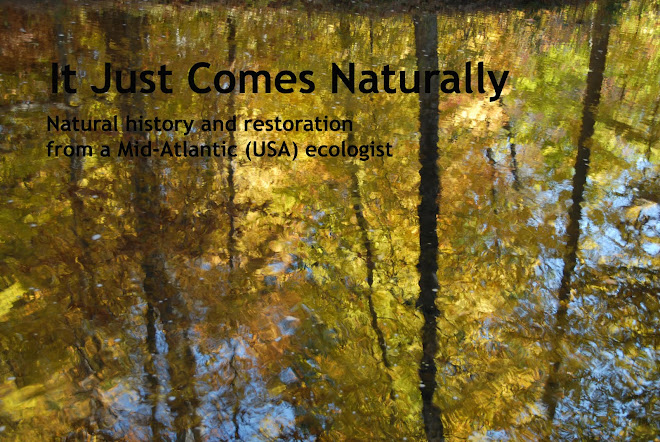 |
| A sweeping view of hayfields at the ChesLen Preserve |
We parked in a small lot near the southern end of the preserve and began our 3-mile loop walk by entering fields that gradually transitioned into woodlands. The woods, relatively young second-growth forest full of the invasive plants that typify all second-growth woods in the northern Piedmont, offered pleasant walking. While the preserve's excellent trail map only showed one trail threading through the woods, Kali and I found ourselves wandering on what was actually a spiderweb of trails throughout the forest. We finally descended straight downhill on one of the paths to reach a pleasant, wooded tributary of the West Branch of Brandywine Creek.
 |
| Brandywine Creek tributary |
 |
| Polywogs in a placid channel alongside the main stream |
 |
| Fieldstone culvert |
 |
| Kali ascending the hill through grasslands |
Because CheLen will become one of the NLT's signature preserves (both for its size and the diversity of habitats it protects), the conservancy recently completed a new visitor contact/public events/land stewardship center on a knoll overlooking the fields. It's a classy facility reflective of the importance of the preserve. The new facility will be dedicated in June.
 |
| New visitor contact/public events/stewardship center |
 |
| A bit "raw," but impressive nonetheless |
 |
| Buttercups along the trail |
 |
| Fleabane (Erigeron spp.) hosting two native bees |
 |
| May-apple (Podophyllum peltatum) with fruit on the streambank |
 |
| Kali picking her way across the stream on natural stepping stones |





















